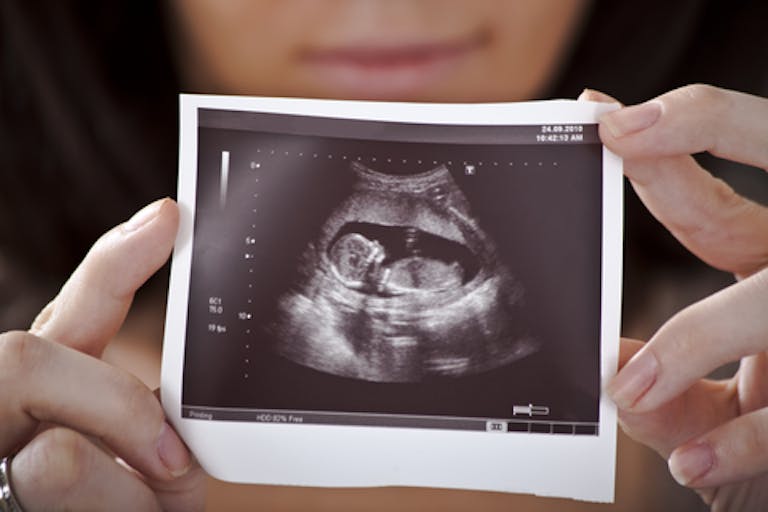
Decades after banning the death penalty, Canada kills inmates by 'assisted suicide'
Nancy Flanders
·
Abortion “rights” — how did we get here?
Included in the September 11, 2012 decision by the Ninth Circuit Court of Appeals, where the Court found that Jennie McCormack could not challenge the Pain-Capable Unborn Child Protection Act, was a history of abortion from a legal standpoint. It’s been almost forty years since the landmark case of Roe v. Wade, and now this “right” to an abortion is so engrained in our legal system.
The history lesson starts:
Historically, laws regulating abortion have sought to further the state’s interest in protecting the health and welfare of pregnant women, who alone bear the burden and risks of pregnancies. With this interest in mind, abortion statutes were first enacted to protect pregnant females from third parties providing dangerous abortions.
Thus, according to the Ninth Circuit’s historical perspective, the whole purpose of abortion laws is to protect the life of the mother. This generally means that the mother is not liable for her action in regards to abortion, while a third party who is not a doctor (if required by that state) can be held liable. The issue of whether the mother could be held liable for her actions was at the heart of this case.
While this supposed protection of the life of the mother was the reason (according to the Ninth Circuit) for abortion laws, the court then explains that no undue burden should be put on this law to “protect” women.
Requiring a woman to read abortion laws is an “undue burden,” according to the Ninth Circuit:
There can be no doubt that requiring women to explore the intricacies of state abortion statutes to ensure that they and their provider act within the Idaho abortion statute framework, results in an “undue burden” on a woman seeking an abortion of a nonviable fetus.
Then there is the issue of how accessible abortions are in a geographical location:
McCormack does not want to have additional children. If she became pregnant, she would seek an abortion again. Because there are no providers of medical abortions in southeast Idaho, McCormack would need to seek the assistance of providers of abortion services outside of southeast Idaho.
The Ninth Circuit recognizes the “burden” of ethical and financial implications:
This Idaho statute heaps yet another substantial obstacle in the already overburdened path that McCormack and pregnant women like her face when deciding whether to obtain an abortion. For many women, the decision whether to have an abortion is a difficult one involving the consideration of weighty ethical, moral, financial, and other considerations…. Among other things, women must contemplate whether they are ready for a child or another child, including considering whether that child conforms with plans for future education and career goals.
The burden of finance is again taken into consideration:
Further, McCormack and other women in her position, have to grapple with the cost of the abortion itself as well as the long-term financial implications of not having one.
The court also speaks of the burden of travel, time off work, and harassment:
Many women, like McCormack, must travel long distances to the closest abortion provider…. This requires a pregnant woman take time to miss work, find childcare, make arrangements for travel to and from the hospital and/or clinic, and to possibly make arrangements to stay overnight to satisfy the 24-hour requirement…. Once at the clinic, pregnant women may have to further manage “the harassment and hostility of antiabortion protestors demonstrating outside a clinic.”
What was framed originally as a health-of-the-mother question (under the theory that women needed to be protected from the dangers of non-clinical abortions) has evolved into a right that cannot be unduly burdened. The court in this case found that the potential of criminal liability to the pregnant women was likely to “[constitute] an undue burden on a woman’s constitutional right to terminate her pregnancy before viability.” So we find ourselves living in a country where women are protected in their “right” to take the lives of their own children.
Live Action News is pro-life news and commentary from a pro-life perspective.
Contact editor@liveaction.org for questions, corrections, or if you are seeking permission to reprint any Live Action News content.
Guest Articles: To submit a guest article to Live Action News, email editor@liveaction.org with an attached Word document of 800-1000 words. Please also attach any photos relevant to your submission if applicable. If your submission is accepted for publication, you will be notified within three weeks. Guest articles are not compensated (see our Open License Agreement). Thank you for your interest in Live Action News!

Nancy Flanders
·
Politics
Cassy Cooke
·
Politics
Nancy Flanders
·
Politics
Bridget Sielicki
·
Politics
Cassy Cooke
·
Politics
Nancy Flanders
·
Politics
Heidi Miller
·
International
Heidi Miller
·
Politics
Heidi Miller
·
Politics
Heidi Miller
·
Investigative
Heidi Miller
·